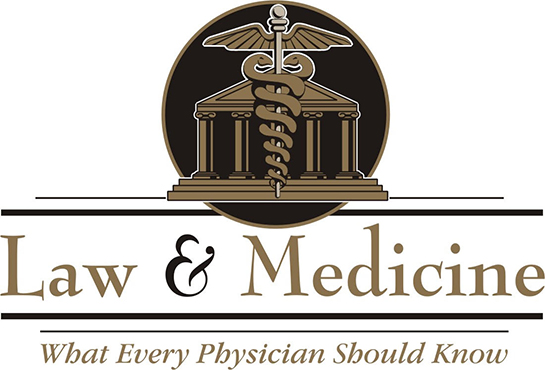Actual Malpractice Cases
This module examines actual malpractice cases and critiques the events that resulted in litigation.
Course Sample
Below is a sample Case Study from this module.
Make the Diagnosis Already
Fact Pattern
A 36 year old woman’s family sued her internist for medical malpractice after the patient died of a pulmonary embolism. The patient first presented with recent onset of cough and shortness of breath. Her chest was noted as clear to auscultation. She had no fever and was otherwise well. A chest X-ray was normal. She was diagnosed with probable bronchitis and treated with an antibiotic.
She called several days later and stated that the cough had improved but that she was still short of breath. She was advised to finish the antibiotic. One week later, she returned to the office. She had finished the antibiotic. She reported occasional cough, continued shortness of breath and occasional dizzy spells. She had a history of panic attacks and migraine headaches. She lived alone and reported increased stress at work.
Her pulse was 96, but her examination was otherwise normal. She was diagnosed with “anxiety disorder” and her SSRI dose was increased. Two days later, she collapsed at work. An ambulance was called, but she could not be resuscitated. Autopsy revealed multiple pulmonary emboli of varying ages and pulmonary infarctions.
One week prior to her first visit, she had flown home to Philadelphia from Europe. She was also taking oral contraceptives. The lawsuit alleged a failure to make a timely diagnosis of pulmonary emboli, which resulted in her death.
Issue
Is a clinician required to arrive at the correct diagnosis the first time he sees the patient?
Rule
We are not always required to make the correct diagnosis at the time of the first encounter, but the overall care of the patient must progress in the direction of diagnosis.
Analysis
Pulmonary embolism can be a difficult diagnosis to make. And, the mere fact that the diagnosis was missed is not necessarily medical malpractice. The problem here is that this patient presented three times with unexplained shortness of breath and the diagnosis was not even considered. On the first visit, a diagnosis of bronchitis was made. Although a possibility, bronchitis is generally not associated with shortness of breath. The patient then called and again complained of dyspnea. After the second office visit for shortness of breath, a diagnosis of anxiety was made. Although anxiety can cause feelings of breathlessness, this did not adequately explain the patient’s elevated pulse.
Because many complaints are never adequately explained and resolve without any consequences, a lengthy work-up is not required every time a patient mentions something. On the other hand, this patient complained of shortness of breath on multiple occasions. And, none of the working diagnoses explained her entire clinical picture.
Most patients, family members and jurors understand that medicine is not perfect and that clinicians sometimes miss things. But, three misses in a row is difficult to explain or defend. Here, just about any test could have changed the outcome. A repeat chest film, pulse oximetry, or EKG could have given clues to the fact that this was not an anxiety disorder. Unfortunately, none of these were ever done.
Conclusion
If a patient’s complaint cannot be adequately addressed by the third visit, further evaluation and/or consultation is in order.
Physician Comments
Below are what other physicians have said about this module.
- These modules put into perspective a lot of medico-legal issues that we experience everyday and drives home the issue that we must always diligently strive to practice prudent, conscientious medicine. – G. Duremdes
- Excellently put together – M. Wilson
- Thoughtful – C. Wood
- The examples are excellent. Very helpful module. – S. Leonard
- Very helpful to read about actual situations and see alternatives to what happened. – J. Clark
- Good information. – Krakes-Stephen
- Good information well presented. – B. Garner
- Excellent the way it is now presented – P. Boylan
- Good review – D. Knapp
- You have a great business model. – B. Bernstein
- Good case studies. – W. Reynolds
- It is always nice to get to know the result of the litigation. – Peralta
